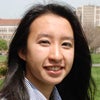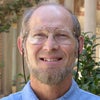 |
Student researcher:
Tran Nguyen Student funding source: Student Opportunities for Academic Research (SOAR) |
 |
Adviser:
James Van Cleve |
Tran Nguyen was surprised when she learned that the 18th-century Scottish philosopher Thomas Reid hypothesized that the visual field obeys a non-Euclidean geometry.
As a double major in mathematics and philosophy, Nguyen found it compelling that Reid, by reflecting on his own observations, could surmise something that took mathematicians nearly another century to conclude.
She approached James Van Cleve, professor of philosophy, to discuss this fact that she learned in his course on British empiricism. Van Cleve is currently writing a comprehensive overview of Reid’s ideas slated for publication by Oxford University Press in 2013. The two decided that they would partner to study Reid’s philosophies in more depth.
“Professor Van Cleve thought I would have something to contribute in terms of Reid’s geometry of visibles,” explained Nguyen, referring to the philosopher’s belief that the visual field is governed by principles other than the theorems put forth by the Greek mathematician Euclid. “It was a nice point of intersections between my two majors.”
Since Spring 2011, Nguyen has been digging into all things Reid — sifting through scholarly write-ups on his work, summarizing them for Van Cleve and making recommendations for additional readings.
Van Cleve also sends Nguyen drafts of his book chapters for her feedback.
“I want to make sure that what I’m writing is accessible to intelligent undergraduates,” he said. “It’s good for me to get Tran’s feedback and objections, or questions about things that aren’t sufficiently clear. That’s another valuable part of what she’s doing.”
Nguyen plans to continue studying the history of philosophy in graduate school. She said her work with Van Cleve has helped her to hone her skills as a student of philosophy. “It’s helped me gain confidence in developing a voice in the field.”
Return to Scholarly Symbiosis >
Read more articles from the Spring/Summer 2012 issue of USC Dornsife Magazine